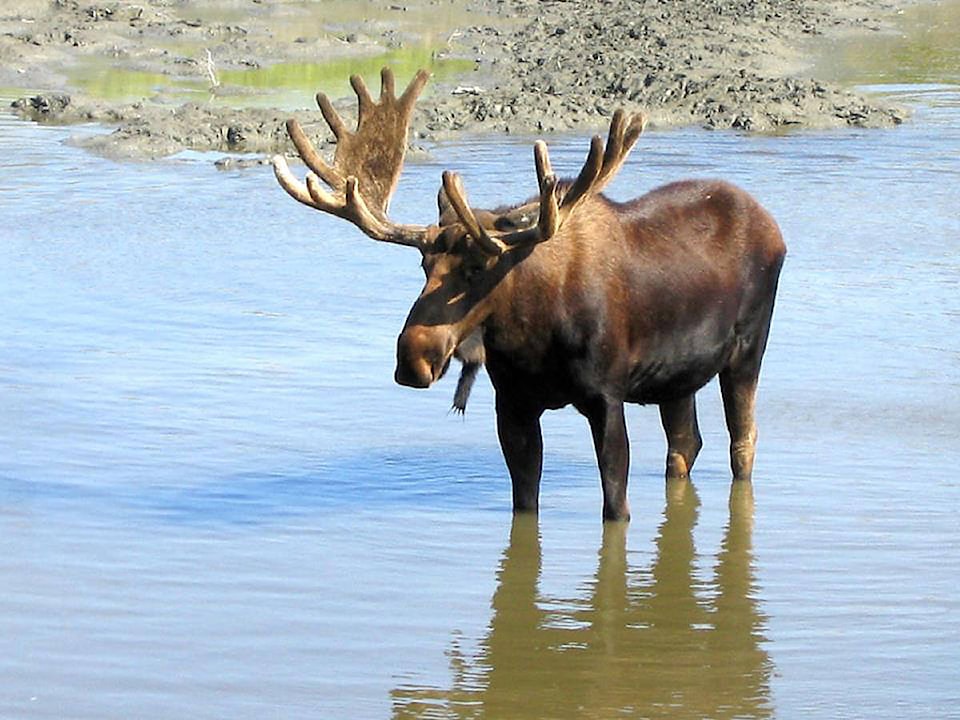The B.C. Supreme Court has dismissed a case of Gitanyow Hereditary Chiefs asking for more control of the moose management plans in areas overlapping Nisga’a territory.
In her March 20 ruling in Vancouver, Justice Neena Sharma acknowledged the complexity of the Crown’s two constitutional obligations, but ultimately agreed with the defence saying the wildlife management decisions related to Nisga’a treaty rights takes priority over Gitanyow asserted rights.
The Gitanyow Hereditary Chiefs who filed the petition have filed an appeal, saying the decision almost guarantees a loss for any B.C. nation disputing hunting rights with nations protected by a modern-day treaty.
“The decision of Justice Sharma in our case has put Aboriginal case law back 30 years,” said Malii (Glen Williams), chief negotiator and Gitanyow Hereditary Chiefs president, in a press release.
“If this decision stands, it will give government power to effectively extinguish Aboriginal hunting rights of nations who have territories which are overlapped even for hunting purposes by those nations who have signed treaties.”
At issue is a historic decline in moose populations in the Nass Wildlife Area (NWA) that began shortly after the Nisga’a Final Agreement came into effect in 2000, B.C.’s first modern-day treaty.
The NWA covers 16,101 square-kilometres of land defined in the agreement.
The Gitanyow claim 84 per cent of their asserted territory overlaps the NWA, which the Nisga’a dispute, and moose numbers there have dropped by as much as 65 per cent according to Gitanyow estimates.
The Hereditary Chiefs brought their case forward in 2015 against the Nisga’a Nation and the Ministry of Forests, Lands and Natural Resources for providing inadequate consultation on the Total Annual Harvest (TAH) in the Nass Wildlife Area, and for not consulting the Gitanyow at all before approving the Annual Management Plan (AMP) developed by the Nisga’a Nass Wildlife Committee.
“What we have sought in our case is to protect our Aboriginal hunting rights, and to ensure meaningful consultation on any activities that affect that right,” said Simogyet Gamlaxyeltxw (Wil Marsden), one of the eight hereditary chiefs of Gitanyow. “We have data that shows … that their Total Allowable Harvest was set too high following the signing of the treaty. This has contributed significantly to the decline of the moose population in our territory, and availability of moose for our people. The government repeatedly assured us that the Nisga’a Final Agreement would not impact our Aboriginal rights, both before and after the treaty was signed … With the decline in the moose population, our people have lost over 30,000 pounds of organic meat from our territory.”
In their submission to the court, the Nisga’a argued when decisions are made under their treaty, the treaty must be strictly applied and bypass the province’s duty to consult other Aboriginal peoples. As a land claims agreement the treaty takes precedence over other asserted Aboriginal rights in the NWA.
Justice Sharma agreed, while also noting the province’s admission that the total allowable harvest in the NWA was set too high in the years immediately following the signing of the Nisga’a treaty. The province did not accept this as the cause of the population decline, and told the court that populations are now recovering.
A 2007 moose population survey by the Nisga’a also agreed on a substantial decline in the Nass River watershed, according to an affidavit submitted by Harry Nyce, but the survey fell short of identifying a single cause. Rather, a combination of overharvesting, high predation rates, harsh winters and reduced habitat were all suggested as contributing factors.
Sharma wrote she was not in a position to decide on reasons for the decline, but conceded the Gitanyow chiefs’ concern with the AMP and TAH was warranted. “I am satisfied … that based on statements made, the Gitanyow held a genuine belief that there was a causative link between those events.”
Sharma added the issue of overlapping territory was important and complicated. In her view, she wrote, the tests that trigger consultations must be modified in order to recognize the Crown’s twin constitutional obligations.
She wrote the TAH decision does trigger the province’s duty to consult the Gitanyow, and does not conflict with its treaty obligations. On that point she said the province adequately fulfilled its duty in the 2016-17 TAH decision, but not in the years prior.
Regarding the AMP, which regulates how moose are harvested in the overlap area, Sharma ruled in favour of the Nisga’a and Province, saying the plan did not trigger a duty to consult because it did not have the potential to adversely affect the Gitanyow’s asserted rights.
“Even if I am wrong about that,” Sharma wrote, “I find recognizing a duty to consult the Gitanyow about the AMP decision would not only be inconsistent, it would be incompatible with the Crown’s duties and responsibilities under the Treaty. As such, the Treaty takes precedence.”
quinn@terracestandard.com
Like us on Facebook and follow us on Twitter
